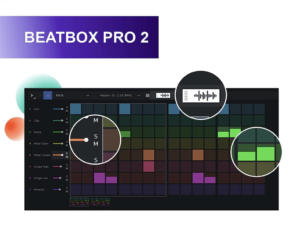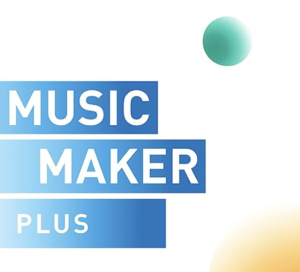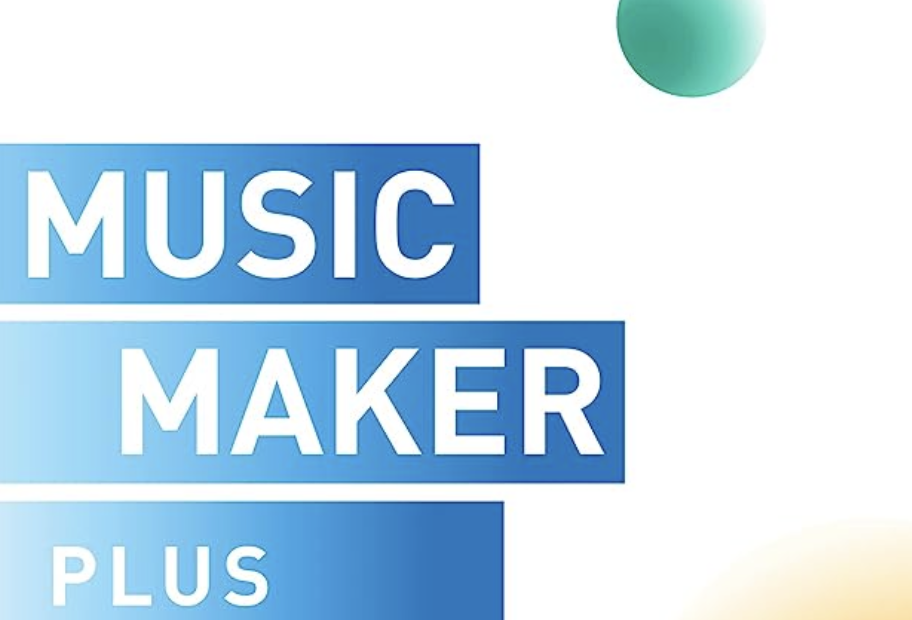Magix Music Maker is a comprehensive music production software that allows musicians, producers, and beginners to create, edit, and produce their own music. We explore some key features and details about Magix Music Maker.
Key Features
 These are some of the main features of this music production package.
These are some of the main features of this music production package.
- User-Friendly Interface: Magix Music Maker features an intuitive and user-friendly interface that makes it accessible to users of all skill levels. The interface is designed to be visually appealing and easy to navigate, allowing users to quickly find the tools and features they need.
- Loop-Based Production: One of the standout features of Magix Music Maker is its extensive library of professionally produced loops and samples. These loops cover various genres and styles, including electronic, hip-hop, rock, pop, and more. Users can easily drag and drop these loops into the timeline to create their compositions.
- Virtual Instruments: The software includes a wide range of virtual instruments that can be played using a MIDI keyboard or programmed with the computer keyboard. These instruments include pianos, guitars, drums, synthesizers, and more, allowing users to add realistic and expressive performances to their tracks.
- MIDI Editing: Magix Music Maker provides comprehensive MIDI editing capabilities, allowing users to create and edit MIDI sequences with ease. Users can adjust note velocities, lengths, positions, and add various MIDI effects to enhance their compositions.
Get Magix MM for a Low Price on Amazon!
Also Read:
Youtube to mp4: how to convert video files
How to isolate vocals from a song
TONEX AI machine Amp modeling Pedal
The 6 Best Guitar Expression Pedals
How to Learn Guitar Faster: 3 Easy Secrets
Learning About Whammy Bar on Guitars
10 Best Guitar Bridge Models on the Market
Additional Features
 These are some additional useful features:
These are some additional useful features:
- Audio Recording and Editing: The software supports audio recording, enabling users to capture their vocals, instruments, or external audio sources. It also offers a range of audio editing tools, such as trimming, cutting, fading, and applying audio effects to shape and refine the recorded audio.
- Mixing and Mastering: Magix Music Maker features a powerful mixing console where users can adjust the volume, panning, and EQ of individual tracks. It also provides a variety of audio effects, such as reverb, delay, compression, and more, to enhance the sound. Additionally, users can master their tracks with built-in mastering tools to achieve a polished and professional sound.
- Export and Sharing: Once the composition is complete, users can export their tracks in various audio formats, such as WAV, MP3, and more. They can also directly upload their music to popular streaming platforms or share it with others via social media or cloud services.
Using Magix Music Maker with Guitar
Magix Music Maker can be a valuable tool for guitar players, offering various features and functionalities that can enhance their music production and creativity. Here’s how guitar players can use Magix Music Maker:
First, it can be used for recording guitar parts. Magix Music Maker allows guitar players to record their guitar parts directly into the software. You can connect your guitar to your computer’s audio interface or use a USB guitar interface to capture the guitar signal. The software supports both electric and acoustic guitars, enabling you to record high-quality guitar tracks.
Additional ways you can use it include:
- Applying Effects and Amp Simulations: Magix Music Maker provides a range of guitar effects and amp simulations that guitar players can use to shape their guitar sound. From classic distortion and overdrive to modulation effects like chorus and delay, you can experiment with different effects and amp simulations to achieve the desired tone for your guitar tracks.
- Creating Backing Tracks and Accompaniment: With the loop-based production approach of Magix Music Maker, guitar players can create custom backing tracks and accompaniment for their guitar playing. You can use the vast library of loops and samples to build a foundation for your guitar parts, adding drums, basslines, keyboards, and other instruments to create full arrangements.
- MIDI Guitar Integration: If you have a MIDI-compatible guitar or a MIDI pickup installed on your guitar, you can use Magix Music Maker to convert your guitar playing into MIDI data. This allows you to trigger virtual instruments and create unique sounds using your guitar. You can experiment with different instrument sounds and play melodies, chords, and solos using your guitar as a controller.
Another useful capability is to help with songwriting and composition. Magix Music Maker provides a creative environment for songwriting and composition. As a guitar player, you can use the software to develop song ideas, arrange chord progressions, and experiment with different song structures. You can also add vocal melodies, harmonies, and other instrumental elements to complete your compositions.
Finally, Magix Music Maker offers mixing and mastering capabilities that can help guitar players achieve a polished and professional sound for their recordings. You can use the software’s mixing console to adjust the levels, panning, and EQ of your guitar tracks, as well as apply audio effects and dynamics processing to enhance the overall mix. The mastering tools can help you finalize your tracks and make them ready for distribution or release.
Get Magix MM for a Low Price on Amazon!
Recording Guitar Parts
 Recording guitar parts with Magix Music Maker is a straightforward process. Here’s a step-by-step guide:
Recording guitar parts with Magix Music Maker is a straightforward process. Here’s a step-by-step guide:
- Connect your Guitar: Plug your guitar into your computer’s audio interface or use a USB guitar interface. Make sure the interface is properly connected and recognized by your computer.
- Set up Audio Input: Open Magix Music Maker and go to the settings or preferences menu. Locate the audio settings and ensure that the input source is set to your guitar interface or audio input device.
- Create a New Track: In Magix Music Maker, create a new audio track for recording your guitar parts. You can do this by clicking on the “+” or “Add Track” button in the track view or mixer.
- Arm the Track for Recording: Enable the record-ready mode for the guitar track by clicking on the record button or arming the track. This prepares the track for recording and allows you to monitor the incoming guitar signal.
- Set the Recording Levels: Adjust the input gain or volume on your audio interface to ensure that the guitar signal is neither too quiet nor clipping (distorting). You can monitor the input levels on the track meter in Magix Music Maker to make sure the levels are optimal.
- Configure Monitoring: Choose whether you want to monitor your guitar directly from your audio interface or through the software. This can be done by enabling direct monitoring on your interface or selecting the appropriate monitoring settings in Magix Music Maker.
- Start Recording: Press the record button in Magix Music Maker to start recording. Begin playing your guitar, and the software will capture the audio signal from your guitar.
- Improve your sound with the following possibilities:
- Monitor and Playback: As you record, you can monitor the recorded guitar part through your headphones or speakers. Once you’ve completed your guitar part, stop the recording and play it back to ensure it was captured correctly.
- Edit and Enhance: After recording, you can use the editing tools in Magix Music Maker to make adjustments to the recorded guitar part. This includes trimming the recording, adding fades, applying effects, or correcting any mistakes or timing issues.
- Layering and Arranging: You can create multiple guitar tracks by repeating the above steps or duplicating the recorded track. This allows you to layer different guitar parts and create harmonies or additional textures in your music.
Remember to save your project regularly to avoid losing your recordings. Experiment with different microphone placements, amp simulations, and effects to find the desired guitar tone.
Magix Music Maker offers a range of additional features and tools to further enhance and shape your guitar recordings, so feel free to explore and experiment with the software to achieve your desired results.
